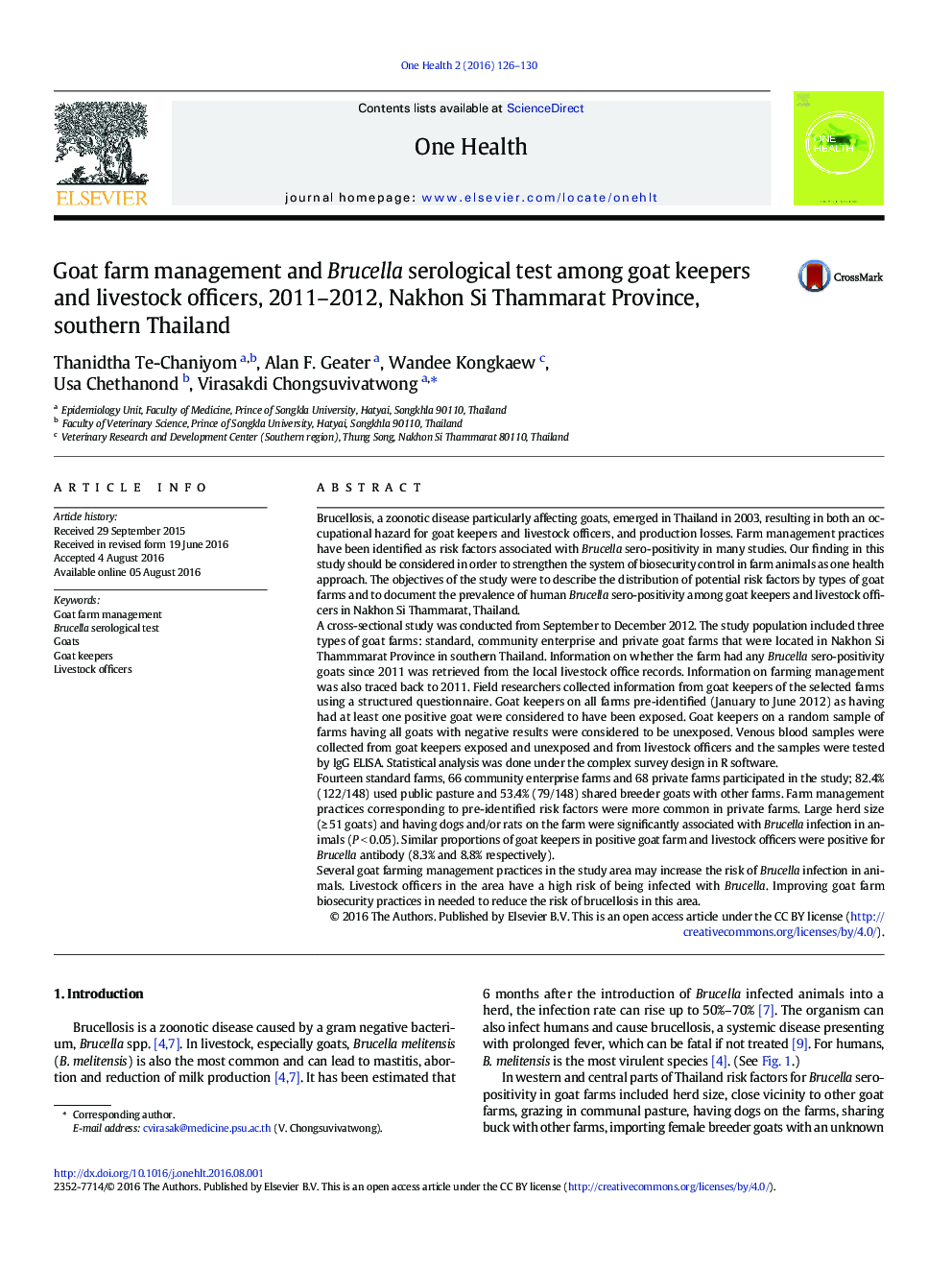| کد مقاله | کد نشریه | سال انتشار | مقاله انگلیسی | نسخه تمام متن |
|---|---|---|---|---|
| 4360775 | 1616192 | 2016 | 5 صفحه PDF | دانلود رایگان |
Brucellosis, a zoonotic disease particularly affecting goats, emerged in Thailand in 2003, resulting in both an occupational hazard for goat keepers and livestock officers, and production losses. Farm management practices have been identified as risk factors associated with Brucella sero-positivity in many studies. Our finding in this study should be considered in order to strengthen the system of biosecurity control in farm animals as one health approach. The objectives of the study were to describe the distribution of potential risk factors by types of goat farms and to document the prevalence of human Brucella sero-positivity among goat keepers and livestock officers in Nakhon Si Thammarat, Thailand.A cross-sectional study was conducted from September to December 2012. The study population included three types of goat farms: standard, community enterprise and private goat farms that were located in Nakhon Si Thammmarat Province in southern Thailand. Information on whether the farm had any Brucella sero-positivity goats since 2011 was retrieved from the local livestock office records. Information on farming management was also traced back to 2011. Field researchers collected information from goat keepers of the selected farms using a structured questionnaire. Goat keepers on all farms pre-identified (January to June 2012) as having had at least one positive goat were considered to have been exposed. Goat keepers on a random sample of farms having all goats with negative results were considered to be unexposed. Venous blood samples were collected from goat keepers exposed and unexposed and from livestock officers and the samples were tested by IgG ELISA. Statistical analysis was done under the complex survey design in R software.Fourteen standard farms, 66 community enterprise farms and 68 private farms participated in the study; 82.4% (122/148) used public pasture and 53.4% (79/148) shared breeder goats with other farms. Farm management practices corresponding to pre-identified risk factors were more common in private farms. Large herd size (≥ 51 goats) and having dogs and/or rats on the farm were significantly associated with Brucella infection in animals (P < 0.05). Similar proportions of goat keepers in positive goat farm and livestock officers were positive for Brucella antibody (8.3% and 8.8% respectively).Several goat farming management practices in the study area may increase the risk of Brucella infection in animals. Livestock officers in the area have a high risk of being infected with Brucella. Improving goat farm biosecurity practices in needed to reduce the risk of brucellosis in this area.
Journal: One Health - Volume 2, December 2016, Pages 126–130
